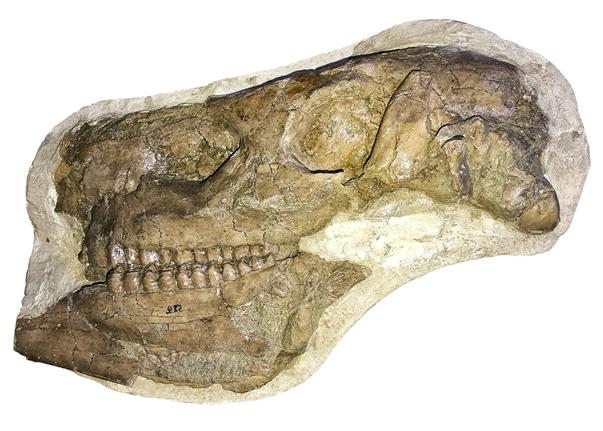THE TUROLIAN HIPPARIONS FROM CIOBURCIU SITE (REPUBLIC OF MOLDOVA): SYSTEMATICS AND PALEODIET
DOI:
https://doi.org/10.54103/2039-4942/15810Keywords:
Cremohipparion moldavicum; Systematics; Mesowear; Microwear.Abstract
The Cioburciu hipparions, Republic of Moldova, are included in a Turolian assemblage, approximately dated between 9 and 7 million years. We assess herein their taxonomic position, systematics, biogeography and paleodietary habits. We have undertaken standard equid measurements as well as accessing the Vera Eisenmann website for measurements and images and analysed craniodental and postcranial elements. This assemblage has been determined to be of a medium-sized hipparion with an elongated muzzle, well developed preorbital fossa that is dorsoventrally extensive and placed close to the orbit, lacking a caninus fossa and having a prominent and deep buccinator fossa. As such, this assemblage is referable to Cremohipparion moldavicum Gromova 1952 common to the Western Ukraine, Balkans, Romania, Republic of Georgia, Turkey and Iran. We have employed a combination of gross cheek tooth wear morphology utilizing the mesowear method and a microscopic analysis of occlusal enamel scars utilizing the light microscope microwear technique. These complementary paleodietary methods indicate that these hipparions engaged in a mixed feeding dietary behavior and that the Cioburciu sample of C. moldavicum likely alternated its diet between browsing and grazing seasonally and/or regionally. A hierarchical cluster analysis based on average scratch and pit numbers positions this taxon among extant mixed feeding ungulates. Large pitting and gouging assessed through the microwear technique indicates occasional consumption of relatively coarser foods than typical mixed feeders or grazers or grit-laden food just prior to death while mesowear indicates that this was not a lifetime habit.
Metrics

Downloads
Additional Files
Published
Issue
Section
License
Copyright (c) 2022 BOGDAN G. RĂŢOI, BOGDAN S. HAIDUC, GINA M. SEMPREBON, PAUL ŢIBULEAC, RAYMOND L. BERNOR

This work is licensed under a Creative Commons Attribution-NonCommercial-NoDerivatives 4.0 International License.
The journal allow the author(s) to hold the copyright without restrictions.
Accepted 2021-12-22
Published 2022-04-26






